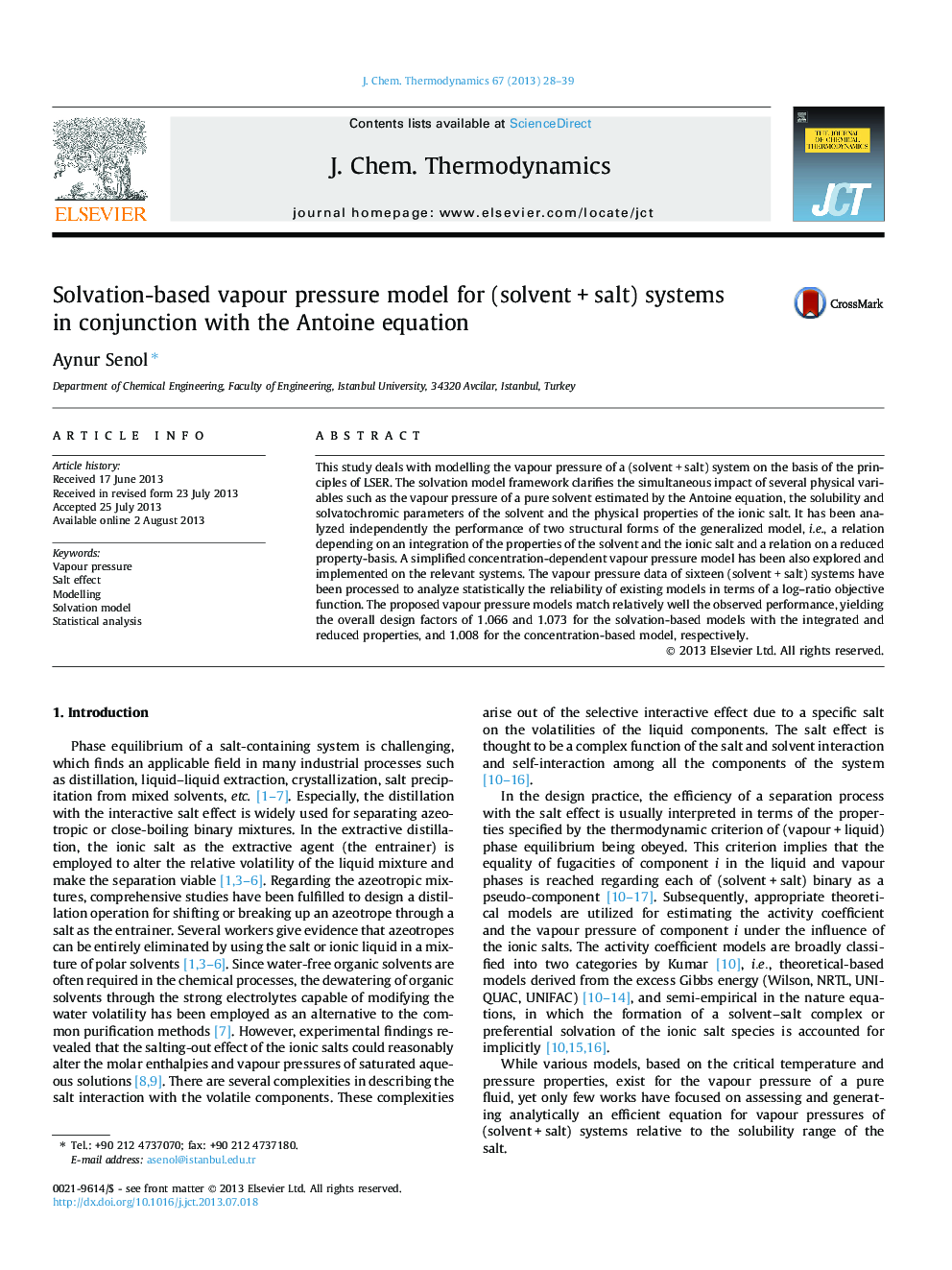| Article ID | Journal | Published Year | Pages | File Type |
|---|---|---|---|---|
| 215508 | The Journal of Chemical Thermodynamics | 2013 | 12 Pages |
•Vapour pressures of (solvent + salt) systems have been estimated through a solvation-based model.•Two structural forms of the generalized solvation model using the Antoine equation have been performed.•A simplified concentration-dependent vapour pressure model has been also processed.•The model reliability analysis has been performed in terms of a log-ratio objective function.•The reliability of the models has been interpreted in terms of the statistical design factors.
This study deals with modelling the vapour pressure of a (solvent + salt) system on the basis of the principles of LSER. The solvation model framework clarifies the simultaneous impact of several physical variables such as the vapour pressure of a pure solvent estimated by the Antoine equation, the solubility and solvatochromic parameters of the solvent and the physical properties of the ionic salt. It has been analyzed independently the performance of two structural forms of the generalized model, i.e., a relation depending on an integration of the properties of the solvent and the ionic salt and a relation on a reduced property-basis. A simplified concentration-dependent vapour pressure model has been also explored and implemented on the relevant systems. The vapour pressure data of sixteen (solvent + salt) systems have been processed to analyze statistically the reliability of existing models in terms of a log–ratio objective function. The proposed vapour pressure models match relatively well the observed performance, yielding the overall design factors of 1.066 and 1.073 for the solvation-based models with the integrated and reduced properties, and 1.008 for the concentration-based model, respectively.
